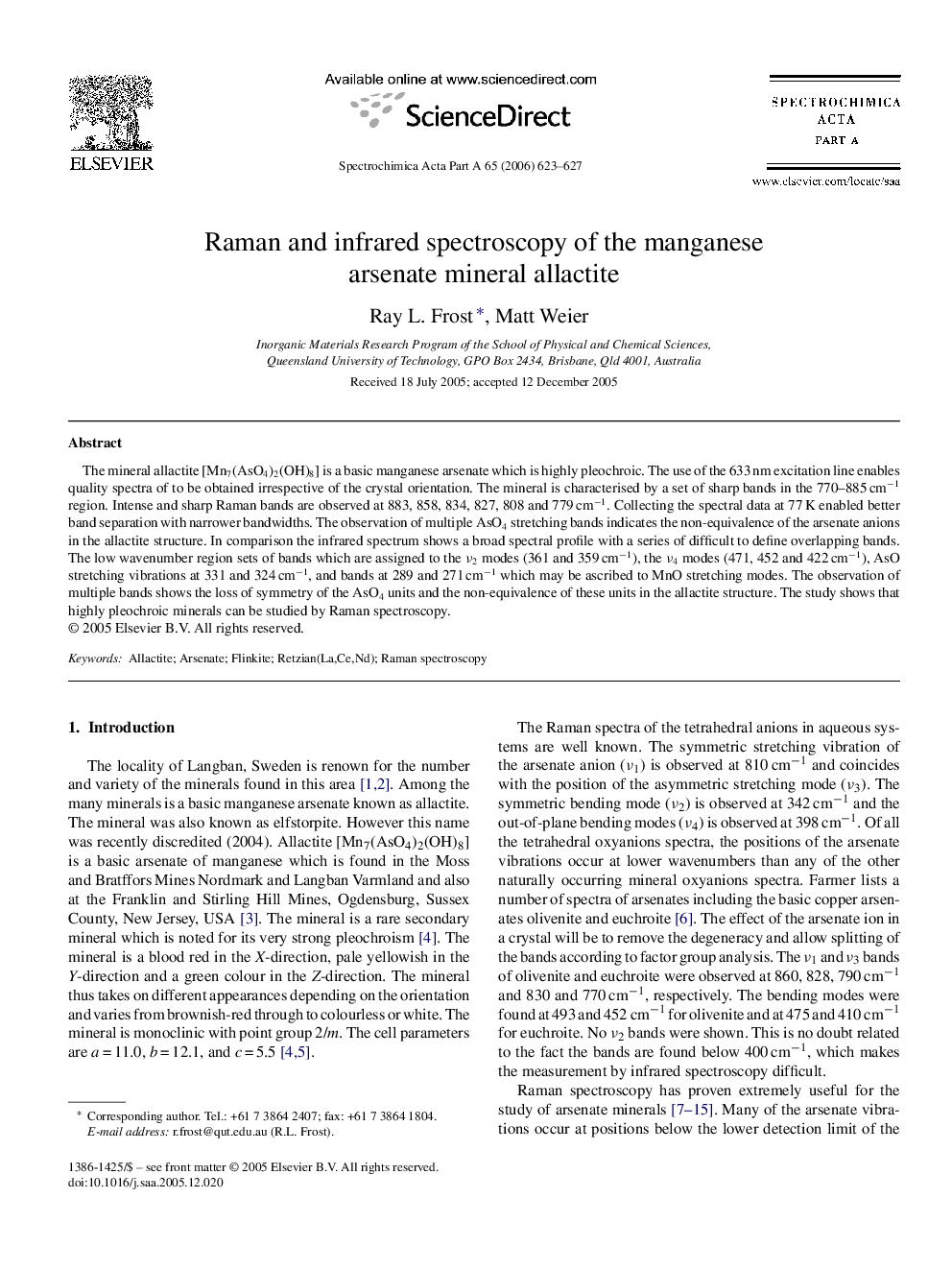| Article ID | Journal | Published Year | Pages | File Type |
|---|---|---|---|---|
| 1236294 | Spectrochimica Acta Part A: Molecular and Biomolecular Spectroscopy | 2006 | 5 Pages |
The mineral allactite [Mn7(AsO4)2(OH)8] is a basic manganese arsenate which is highly pleochroic. The use of the 633 nm excitation line enables quality spectra of to be obtained irrespective of the crystal orientation. The mineral is characterised by a set of sharp bands in the 770–885 cm−1 region. Intense and sharp Raman bands are observed at 883, 858, 834, 827, 808 and 779 cm−1. Collecting the spectral data at 77 K enabled better band separation with narrower bandwidths. The observation of multiple AsO4 stretching bands indicates the non-equivalence of the arsenate anions in the allactite structure. In comparison the infrared spectrum shows a broad spectral profile with a series of difficult to define overlapping bands. The low wavenumber region sets of bands which are assigned to the ν2 modes (361 and 359 cm−1), the ν4 modes (471, 452 and 422 cm−1), AsO stretching vibrations at 331 and 324 cm−1, and bands at 289 and 271 cm−1 which may be ascribed to MnO stretching modes. The observation of multiple bands shows the loss of symmetry of the AsO4 units and the non-equivalence of these units in the allactite structure. The study shows that highly pleochroic minerals can be studied by Raman spectroscopy.
